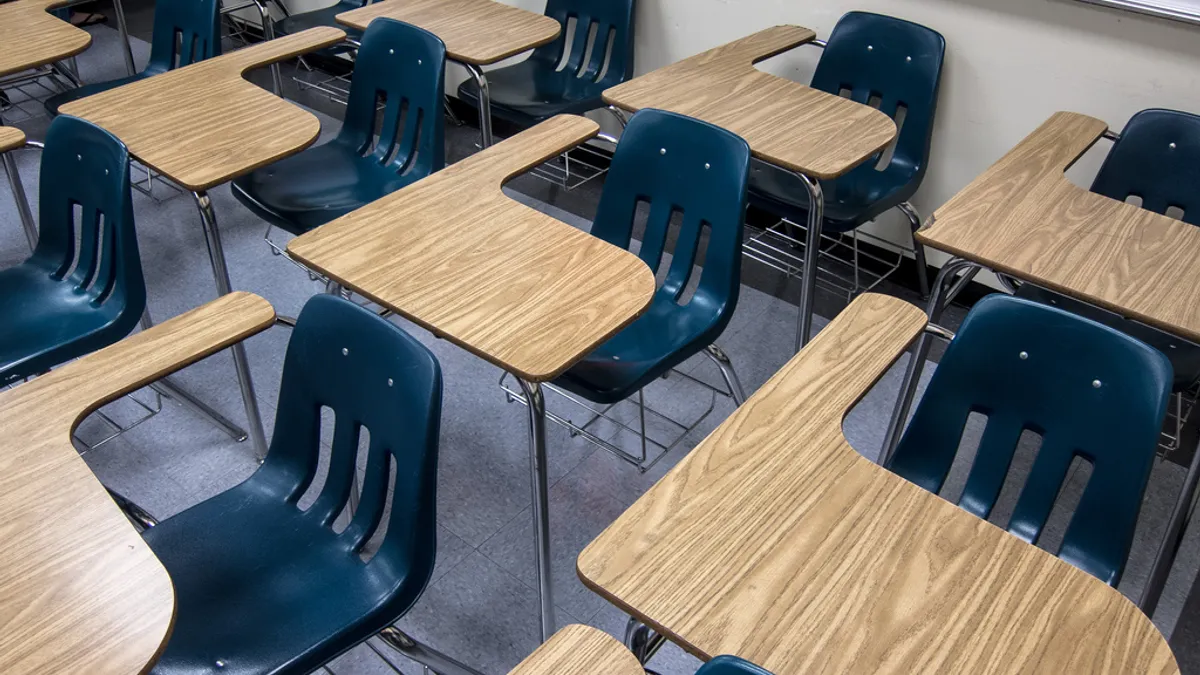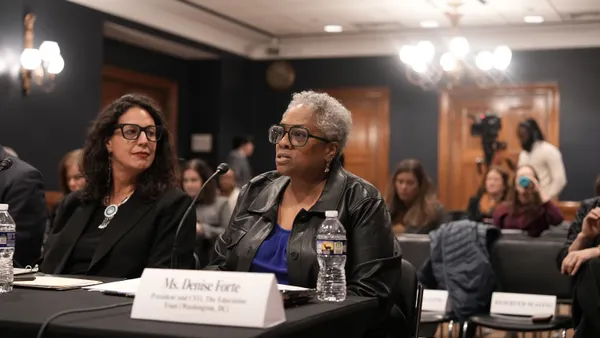Dive Brief:
-
The novel coronavirus pandemic has had a disparate impact on students with disabilities, who experienced a greater loss of instructional time alongside an increase in traumatic experiences, according to a new report from the Civil Rights Project.
-
In fact, the disparities during the pandemic have been exacerbated by pre-COVID-19 inequalities, particularly for students of color who qualify for special education services under the Individuals with Disabilities Education Act and those students with disabilities who qualify for 504 services, the 121-page report said.
-
As schools recover from the pandemic, they should put the needs of students with disabilities in the forefront with support from more federal funding and rigorous federal civil rights enforcement, the report recommends.
Dive Insight:
Daniel Losen, co-author of the report and director of the Center for Civil Rights Remedies, an initiative at the Civil Rights Project/Proyecto Derechos Civiles, said the report’s authors used data from the U.S. Department of Education’s Civil Rights Data Collection for 2017-18, as well as the center’s previous research, to emphasize the urgent need for race-conscious resource remedies — particularly in ways that support students with disabilities.
Losen said some of the most concerning findings included:
-
Pre-pandemic data regarding discipline disparities that resulted in lack of instructional time. For example, students without disabilities lost 19 days per 100 students enrolled due to out-of-school suspensions, while students who qualify for IDEA lost 41 days per 100 students enrolled. Data for out-of-school suspensions for students with disabilities also showed racial disparities among secondary students, with the risk for suspension for Black students with disabilities above 40% and 33% for Native American students.
“I'm hoping that people understand this better now that most kids have lost instructional time due to COVID,” Losen said. “That ... people are realizing the importance and the impact that losing instructional time can have on their kids.” -
Underidentification of students with disabilities who don't qualify for IDEA services but have a disability that substantially limits one or more major life activities. Students in this category often include those with ADHD, depression, anxiety disorders, and others who may need mental or behavioral health services on a regular basis, the report said. Districts must provide individualized supports to these students under Section 504 of the Rehabilitation Act of 1973. However, the report’s research shows that, of districts with at least 1,000 enrolled students, which represents 306 districts serving a total of nearly 1 million students, not one student was identified for 504-only services.
“It worries me a lot that in terms of being prepared for when these students return in person,” Losen said.
The report, which also breaks down certain data at the state and district levels, recommends federal funding be expanded and used for the hiring of school staff such as counselors, social workers and psychologists, who can help address students’ needs. Additionally, incentives should be provided for state funding to support students experiencing trauma and for services for 504-only students.
The report also recommends reinstating school discipline guidance from 2014 that encouraged non-discriminatory practices, as well as increased federal civil rights enforcement and capacity to promote substantive change when responding to systemic discrimination.






 Dive Awards
Dive Awards




